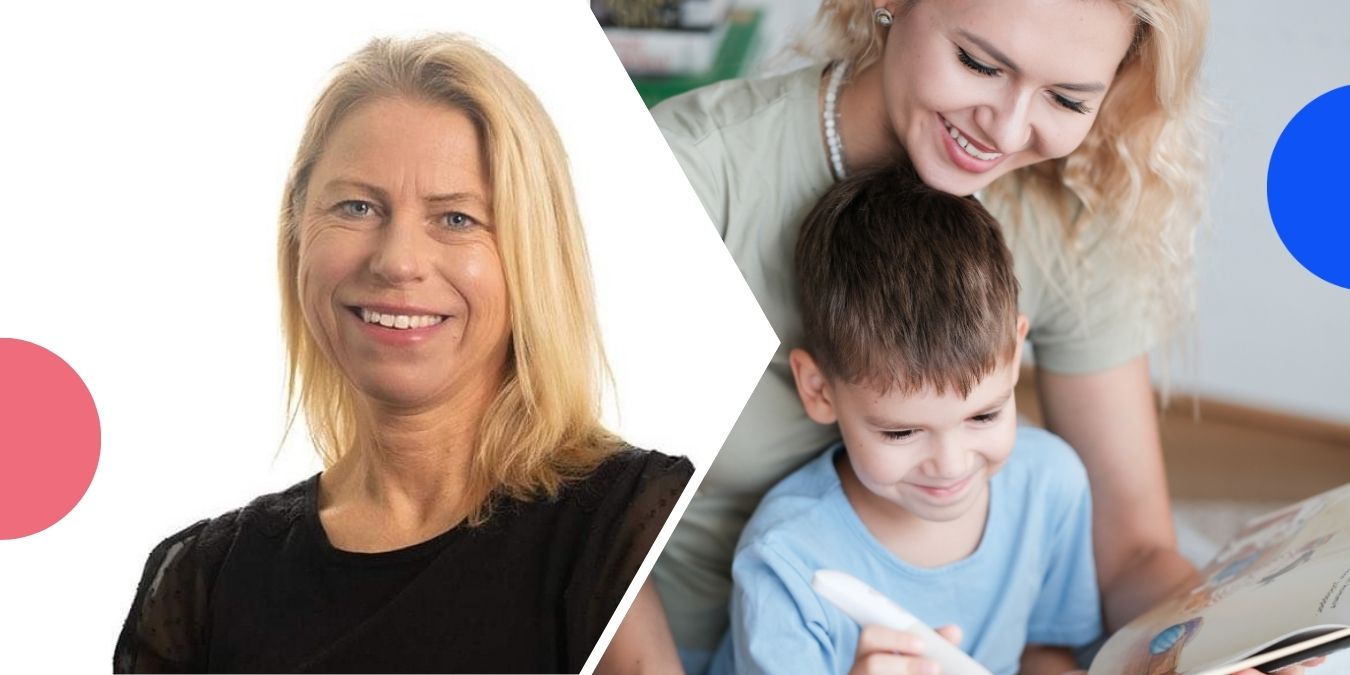
Preschool teacher Karin: How to build a rich vocabulary in your child – simple tricks that make a big difference
Having a rich vocabulary is crucial for children’s language development and academic success . Research shows that children who are exposed to a wide variety of words early in life develop better reading comprehension, are more able to express themselves, and become more independent learners (Hart & Risley, 1995). A language-rich environment, where children hear and use a wide variety of words, creates the best conditions for strong language development (Dickinson & Tabors, 2001).
Interactive reading – makes the book come alive
Interactive reading is about reading books with the child, rather than for the child. By asking questions, talking about the plot, and connecting the content of the book to the child's own experiences, a deeper understanding and a richer vocabulary are created.
Research shows that children who actively participate in reading aloud develop greater language comprehension compared to those who just listen passively (Whitehurst et al., 1988). When adults ask questions, discuss words, and encourage the child to retell what they have heard, both vocabulary and reading comprehension are strengthened.
How to do interactive reading at home:
- Pause and ask : "What do you think happens next?" or "How do you think the main character feels?"
- Explore new words: If there is a word the child doesn't know, explain it and use it in other sentences.
- Let the child be the narrator: Ask the child to retell the story of the book in their own words.
By making reading aloud interactive, it becomes a language-developing and engaging activity that strengthens the child's understanding and expressive skills.
Optimize language development with Readioo
By using Readioo's books and other types of reading aloud, you optimize your child's opportunities to develop a rich and varied vocabulary.
Readioo's books are specifically designed to stimulate active participation while supporting early pseudo-reading – the child's first step towards understanding that written words on the page have meaning. According to Chall (1983), pseudo-reading is an important part of children's reading development, where they begin to understand that text represents spoken language.

This is how Readioo strengthens early reading development:
- The child gains an early understanding of written language – that every sign and word means something.
- By dabbing, listening and talking about the text, the child begins to understand that the written word corresponds to the spoken word.
- Reading aloud becomes a path into the world of reading where the child gradually connects sounds, words and sentences to what they see on the page.
By combining Readioo's books with an engaged and curious reading experience, you create the very best conditions for your child to take their first steps towards reading on their own - and at the same time develop a strong and nuanced language.
Rhymes, songs and language games - language development through play
Children love rhymes and songs, and research shows that songs and rhythm help children both memorize and understand new words. When children repeat rhymes and songs, they strengthen their phonological awareness, which is a crucial factor in their later success in decoding written words and learning to read (Goswami, 2001).
Here's how you can develop a larger vocabulary:
- Sing children's books that talk together and let the child fill in the words.
- Create your own rhymes and songs – "The car is rolling, the cat…?"
- Play "guess the word": Describe a word without saying it and let the child figure out what it is.
Songs and rhymes create a playful approach to words and sounds, which strengthens children's linguistic awareness and makes learning natural and fun.
Bring the language to life – every day
Language development happens all the time and in all environments. By reading books, talking, playing with words and language, and exploring the world together, we build a strong vocabulary in our children – and we do it in a way that is both fun and natural.
For those of you who want to delve even deeper into how you can support your child's language development, we recommend the free book "Språket börjar med dig!" from Bokstart. It provides concrete tips on how you can stimulate your child's language in everyday life.
----------------
Karin Gifvas is a preschool, primary school and special education teacher with deep expertise in reading, language and writing development. With extensive experience working with digital services and products, she has a strong focus on creating accessible and inspiring learning environments. Through her work, she strives to give all children the best conditions to develop a rich language, a strong desire to read and a curiosity for learning.
References
Chall, JS (1983). Stages of Reading Development . McGraw-Hill.
Dickinson, DK, & Tabors, PO (2001). Beginning Literacy with Language: Young Children Learning at Home and School . Paul H. Brookes Publishing Co.
Goswami, U. (2001). Early Phonological Development and the Acquisition of Literacy . In SB Neuman & DK Dickinson (Eds.), Handbook of Early Literacy Research (pp. 111–125). Guilford Press.
Hart, B., & Risley, TR (1995). Meaningful Differences in the Everyday Experience of Young American Children . Paul H. Brookes Publishing Co.
Whitehurst, GJ, Falco, FL, Lonigan, CJ, Fischel, JE, DeBaryshe, BD, Valdez-Menchaca, MC, & Caulfield, M. (1988). Accelerating Language Development Through Picture Book Reading . Developmental Psychology , 24(4), 552–559.

